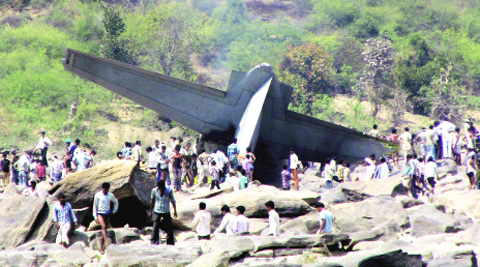
The shocking crash last month of the IAF’s special operations C-130 J aircraft is believed to have been caused by the transporter inadvertently flying into the wake of the lead plane during the tactical training mission, leading to a loss of control at low altitude and the accident that killed all five crew members.
Preliminary findings of the detailed inquiry under way point to a “wake turbulence” incident in which the C-130 J, which was part of a two-aircraft formation practising insertion of paratroopers, stalled at a low level after hitting the wake of the lead aircraft.
The findings have ruled out any technical fault and suggested that the aircraft failed to adopt a flight path to avoid the massive wake generated by the four engines of the lead C-130 J. An error of judgement by the pilot could have contributed to the incident, the findings suggest.
The probability of such a loss of control is particularly high when heavy aircraft are conducting manoeuvres close to the ground. In this case, both aircraft were flying at 300 feet above ground level and had to climb to 1,000 feet when the accident occurred.
While the lead aircraft of the formation successfully climbed to 1,000 feet after the simulated “drop”, the second aircraft crashed into a river bed without any warning or distress signal.
to help us personalise your reading experience.
This, sources said, suggests a sudden, drastic loss of control due to the turbulence generated by the lead C-130 J and is being corroborated by the air crash investigators with data from the flight recorders.
Once the inquiry findings are finalised, new safety directives are likely to be generated within the air force to avoid such accidents. The air force had also sought the help of the manufacturer, Lockheed Martin, to decipher the voice recorder as well as the flight data recorder.
The loss of the air force’s most modern special operations C-130 J aircraft on March 28 was particularly shocking given that the plane had been inducted into the air force in 2010 and was commanded by Wing Commander Prashant Joshi, an experienced pilot and the second in command of the 77 ‘Veiled Vipers’ squadron.
Hours after taking off as part of a two-aircraft formation from Agra to carry out low-level flying training, the aircraft had apparently grazed a hillock before crashing 116 km west of Gwalior on the Rajasthan-Madhya Pradesh border.

